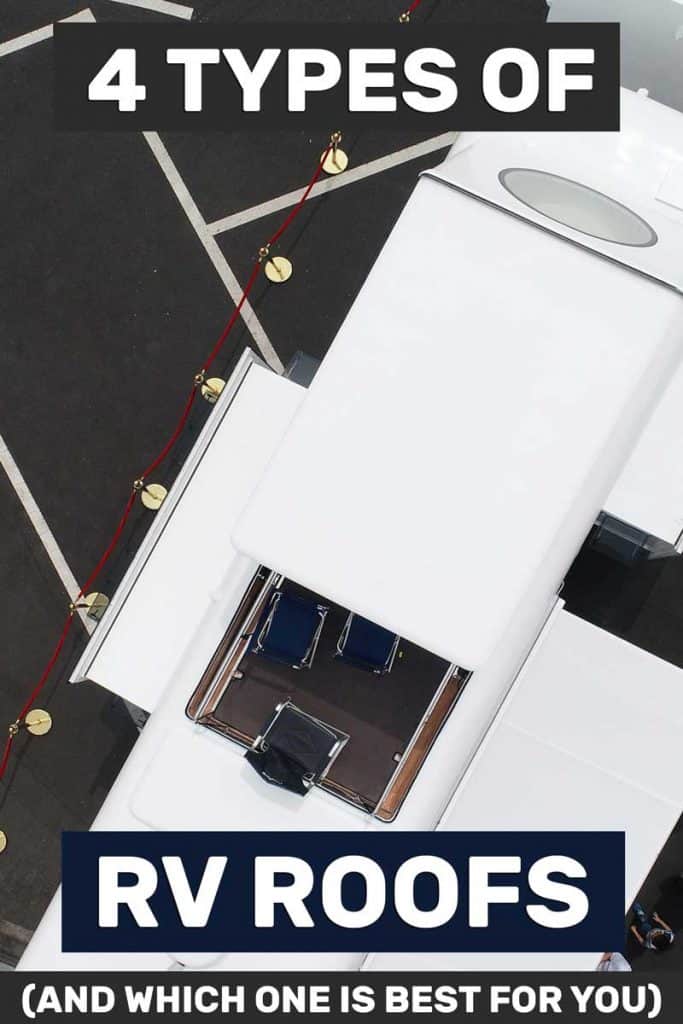 Aren't all RV roofs the same? Are there different types of RV roofs, and if so which one should you get? Well, the truth is no; they are not all the same. Let's talk about those differences and the pros and cons of each.
Aren't all RV roofs the same? Are there different types of RV roofs, and if so which one should you get? Well, the truth is no; they are not all the same. Let's talk about those differences and the pros and cons of each.
There are four types of RV roofs:
- Rubber EPDM roof stands for Ethylene Propylene Diene Monomer; it is a membrane-type rubber used for flat roofs.
- Rubber TPO roof is single ply and made from polypropylene and ethylene-propylene the integrity of the rubber is changed by a chemical reaction to bond them.
- Fiberglass roof is a reinforced plastic of textile fiber embedded with glass in a resin.
- An Aluminum roof is a silver-white metal made from sheets of aluminum roofing.
The above is just a straightforward list of the types of RV roofs. There are various factors that you need to take into consideration before you choose a roof for your RV. Below we will give you more details about the pros and cons of each type of roof.
Types Of RV Roof
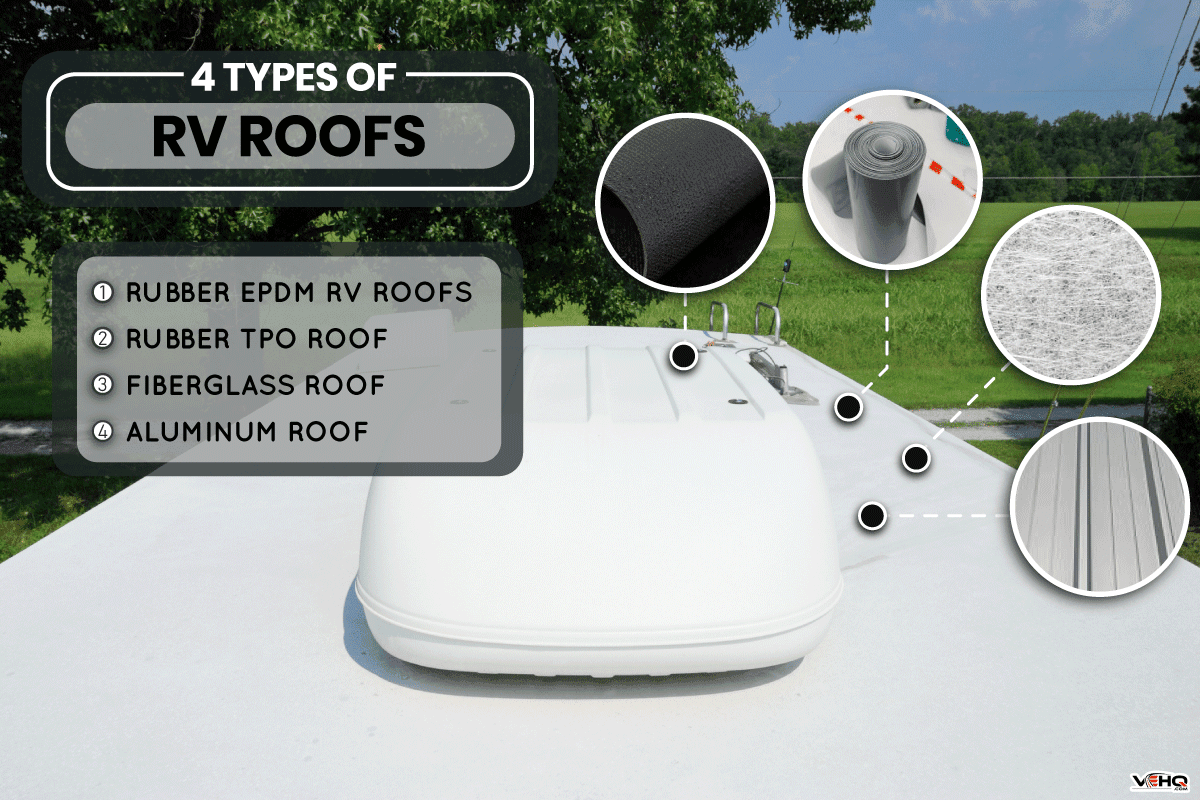
EPDM RV Roofs
One of there most significant advantages of EPDM Roofs is that the materials tend to be the least expensive and is easy to install.
Pros
- It is lightweight, which helps keep the overall weight of your RV to a minimum.
- EPDM doesn't dent, scuff, or scratch easily.
- When EPDM roofs need small repairs, it is as easy as applying liquid roof membranes, some types of rubber shingles, or latex tape or adhesives.
Cons
- EPDM's most significant disadvantage is its finished appearance. It looks like a stretched out innertube.
- It also absorbs heat quickly, even if you find it in lighter colored rolls. This heating can lead to more work for keeping an RV cool.
- EPDM material can puncture easily and needs repair quickly to avoid water under the layers.
RV Models with EPDM Roofing
The Winnebago Ultra Lite 2014 model has a one-piece seamless EPDM roof. Click here to see more.
Rubber TPO Roof
Thermoplastic polyolefin is a type of single-ply rubber.
Pros
There are several advantages to this type of RV roof.
- TPO material is white, which reflects heat.
- It is gaining popularity as a less expensive reflective roofing material.
- You will need to choose how to install it, and the cloth can be fastened directly to the roof deck, or glued on with adhesives. It can also be welded on around rooftop fixtures.
Cons
- Unfortunately, there is a lack of consistency between the quality of different products. You could buy the same-priced product from two manufacturers, and get two products very different in quality.
- Another con of TPO for a roof is that there is that the thickness of the product can vary. This variety of thickness leads some people to think that thicker products will last longer.
- The TPO material wears out and degrades at the same rate no matter the depth.
- Thermoplastic polyolefin must also have a laminate cover. If it does not, it can develop weakness and cracks in the roofing materials very quickly. The rolls of the rubber are relatively small in width; this means that you will have more seams that will contract and expand, causing cracking and leaking in the roof, which may allow water to enter.
RV Types with TPO Roofs
This Fleetwood Flair has a one-piece TPO roof. Click here to see her specs.
The Winnebago Micro Minnie has options for a TPO roof. Click here to see more.
Fiberglass Roofs
Fiberglass roofing is an auxiliary roof made using a mix of synthetic materials and glass fibers established in large panels or individual sheets.
Pros
Pros of fiberglass roofing include:
- Durability, which translates into a low risk of cracks and damage.
- Similarly, Fiberglass is rot and rust-resistant, as well as being fire-resistant.
- It is also very lightweight, and easily custom made in color, shape, and patterns.
Cons
- If a fiberglass roof is damaged, it is expensive to repair. Often it is cheaper to replace sections than to repair, and the time estimate goes up quickly in that case.
- One other significant con to fiberglass as a roof is that it isn't heat resistant. With exposure to extensive heat, fiberglass will form thermal splits, and repair will need to be completed immediately.
Types of RVs with Fiberglass Roofs
Venture Sonic RVs have a seamless fiberglass roof. Click here to see the floorplans available, and specs on this model.
Winnebago Minnie Winnie has a one-piece fiberglass roof. Click here to see the floorplans and specs.
Aluminum Roofing
Once loved for its longevity, there are some things to consider with aluminum roofs for RVs.
Pros
Several pros include:
- Its ability to resist tree limb piercing.
- Aluminum is less susceptible to holes from the friction of the RV's motion. Aluminum will far outlast the softer roof materials, though it will also be fire-resistant.
Cons
Next, we move into the cons of aluminum roofing":
- While aluminum will outlast a softer roof, it will quickly lose its visual appeal, in addition to being susceptible to seam failure.
- Aluminum is not heat resistant.
- Aluminum will not adhere well to glue, so it must be fastened. Using galvanized nails is a must to prevent rust, and subsequently hidden leaks.
- Leaks under aluminum can hide easily as aluminum will maintain its structure until pressure is applied in a weakened hole area.
Types of RVs with Aluminum Roofing
These days it is challenging to find aluminum roofs on RV's but a few places like LazeDaze RVs you can find a few options. Click here to see the specs on these RVs.
Roofing Material Comparison
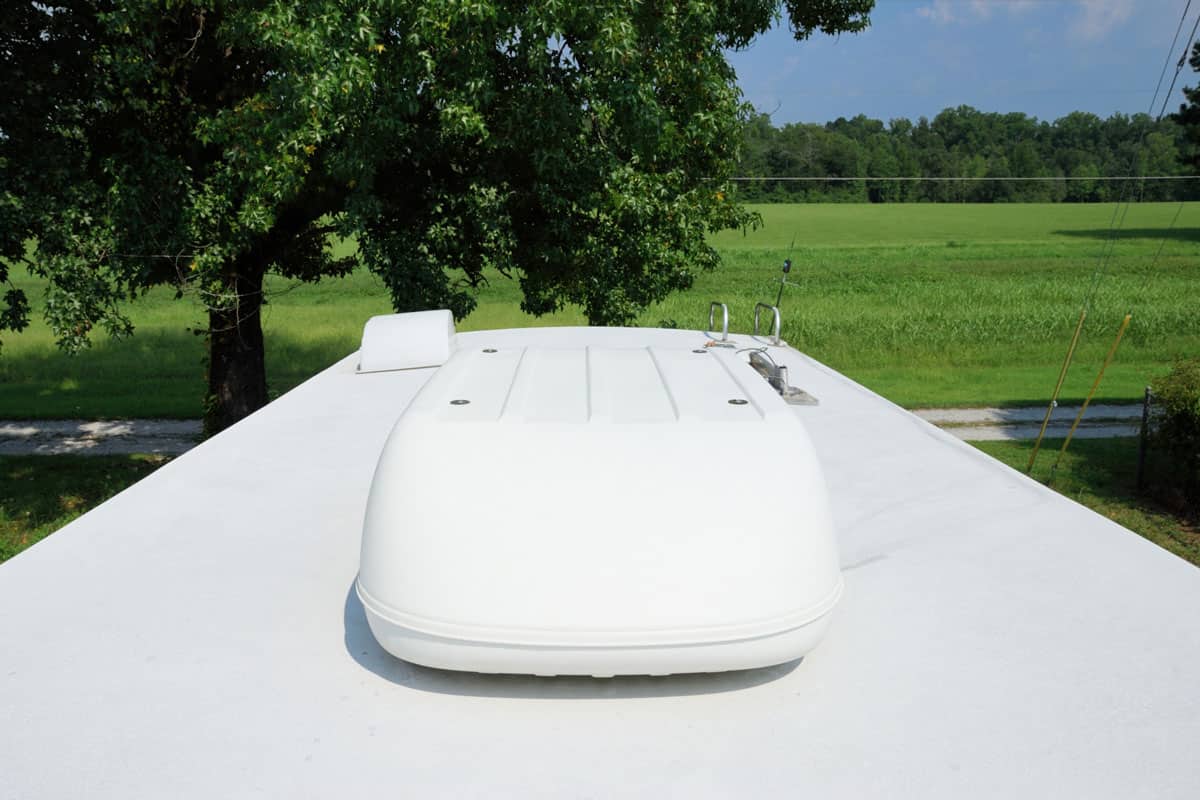
Even though we have given you a few separate views of each roofing material, it is essential to take a moment to compare them side by side.
TPO vs. EPDM
West Roofing Systems, which can be found if you click here, gives this link gives a great comparison of these materials. Highlights of the comparison are as follows.
EPDM Roof
- Used for 60 years
- Retains sunlight
- Mechanically attached
- Tape fused seams
- Color options: black
- Lower cost per sq ft
- typically last 20-25 year
TPO Roof
- Used for around 20 years
- Reflects sunlight
- Adheres chemically
- Seams welded by hot air gun
- Color Options: Grey, Tan, White, Specialty colors
- Lower cost per sq ft
- typically lasts 15-25 years
Comparatively, these two materials are similar in use and installations. Each is cost-effective and will last for a while, and require inspections for repairs.
Similarly, let's compare fiberglass and TPO roofs.
Fiberglass Roof
- Could last 40 years, may need repairs if thermal cracks occur
- Cost is medium in the range
- Does not reflect sunlight
- Cost of repair is higher
TPO Roof
- Used for around 20 years
- Reflects sunlight
- Adheres chemically
- Seams fused by hot air gun
- Color Options: Grey, Tan, White, Specialty colors
- Lower cost per sq ft
- typically lasts 15-25 years
Roof Structure of RVs
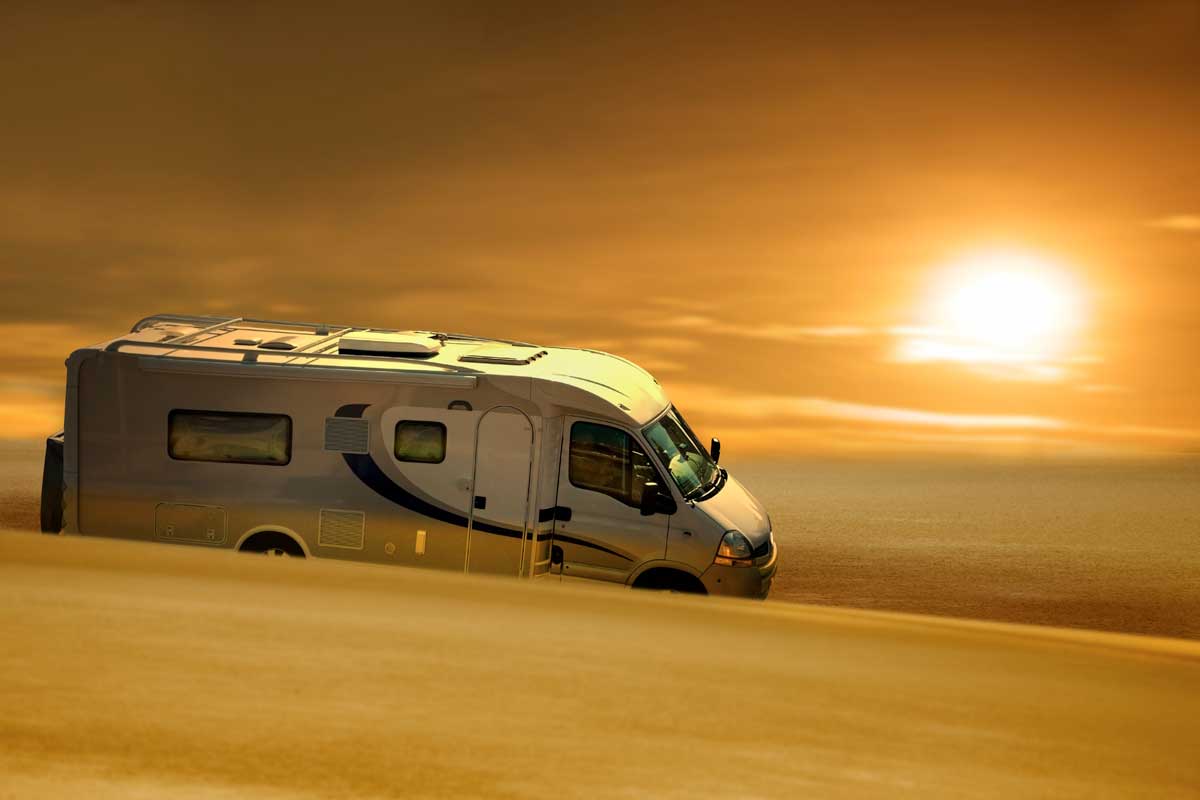
Walking into an RV, most people look at the aesthetic appeal. The structure of your RV is vital to know and understand. If you have ever wondered what the bare bones of an RV look like click here.
Naturally, an RV similar to a house will have layers. The main structure is built first, then the roof and outer walls are built. Then the studs are covered to make the inside pretty. For our purposes, let's focus on the roof.
The layers going from lowest to highest of an RV roof are as follows:
- Ceiling
- Studs
- Membrane
- Roof Material
The membrane layer is extra security. It covers the two inner layers of the top of the RV. It is laid down before the roof. The membrane is sealed to protect the studs and ceiling of your RV in case of a roof leak. In essence, your RV roof should have two layers of sealing: an inner membrane layer and an outer roof covering layer.
The membrane separates the outside of the roof from the inside layers of your ceiling and the roof.
What Type Of RV Roof Will You Pick?
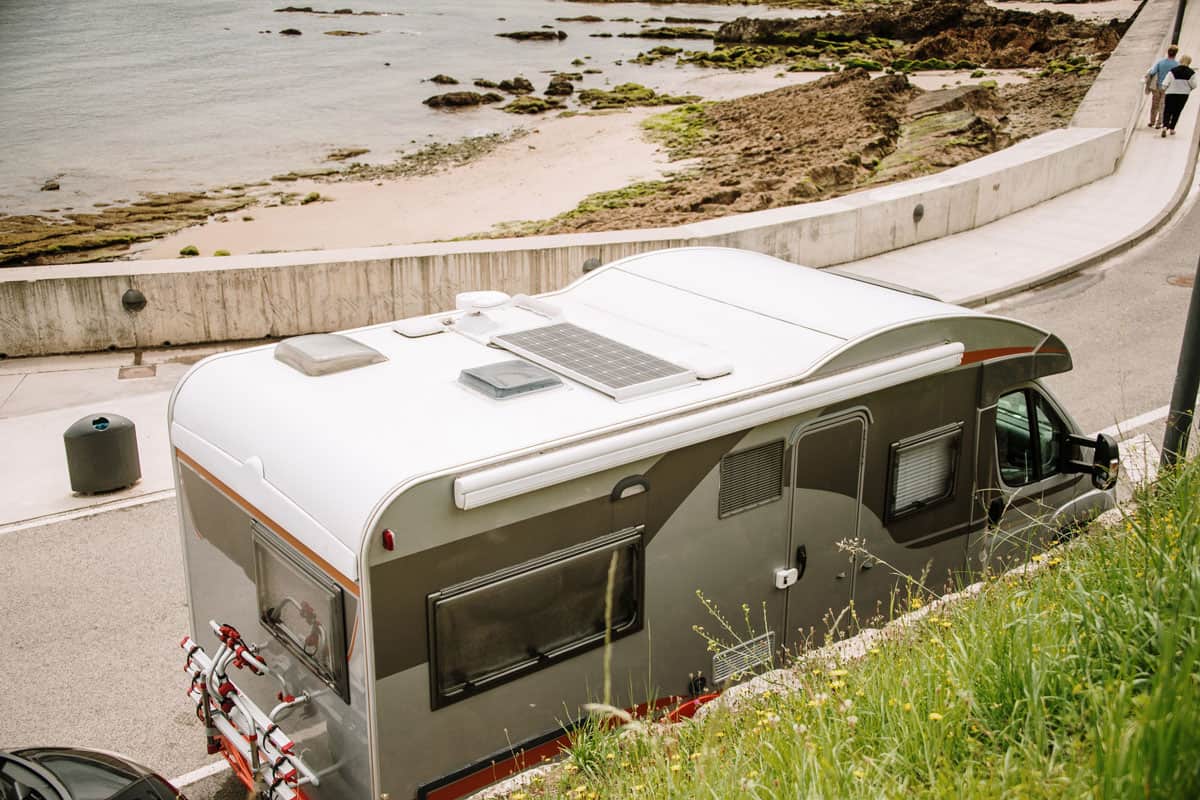
Are you ready to purchase an RV? Here is an excellent link to buying used RVs. You now know that no matter what type of RV roof you choose, each one comes with a list of repair costs, maintenance requirements, and specs to consider.
So no matter what type of RV roof you pick you, set up a schedule for checking for leaks. Prevention is the best roof protection plan. Each type of RV roof, EPDM, TPO, Fiberglass, or Aluminum will need sealing or repairing at some point.
Comment and let us know what type of RV roof you have, and if you have ever had to repair it?

There are important differences that one needs to be aware of to figure out which roofing material is right for your RV. When making your decision, consider factors such as cost, longevity, durability, maintenance, ease of installation. For most RV roofing projects, a TPO membrane is going to cost you more than an equivalent EPDM membrane. For that reason, EPDM roofs are tends to be more economical. An EPDM membrane will also perform better than TPO in colder climates.
Thanks for the information liquid!
I am using Fiberglass roof and I saw that it really good but it’s quite expensive. But I think it will prove perfectly well for your RV if you tend to go camping almost every season
A TPO roof is the greatest alternative if you want a roof that can reflect UV rays and keep you cool in the summer with colorful possibilities. An EPDM roof, on the other hand, will be an excellent alternative for families looking for a warm RV that will last for a long time.
what type roof coating can be used on a TPO roof membrane Type A